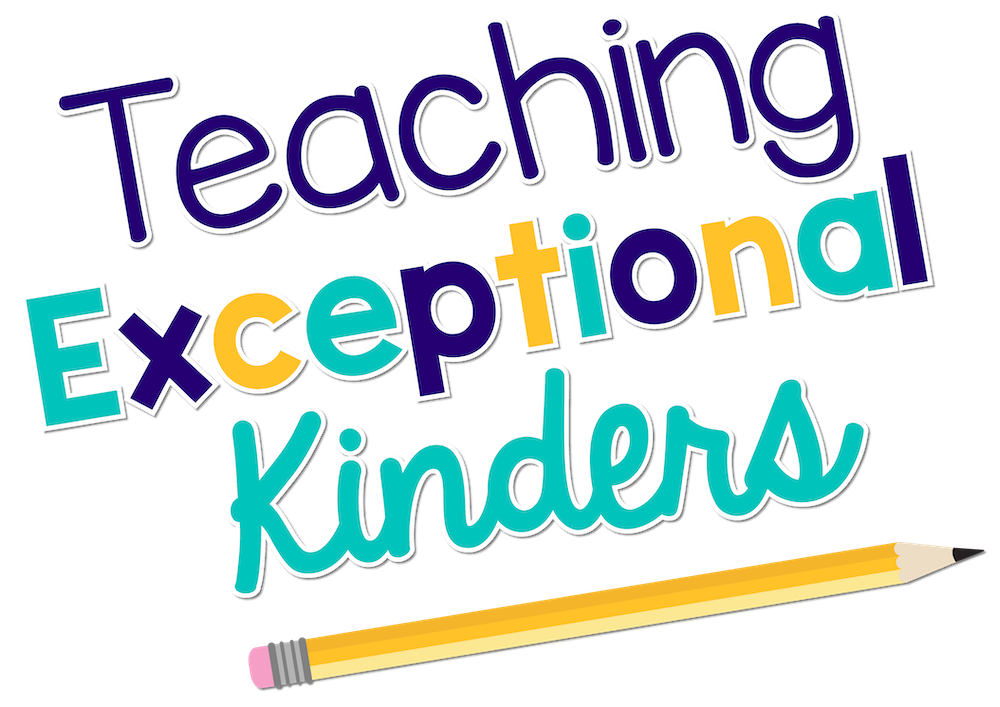How to Address Explosive Behavior in Kindergarten
Have you ever had a student in your classroom who has moments when their behavior is out of control? You aren’t alone! No matter how long you have been teaching, chances are that you have dealt with explosive behavior in kindergarten. However, that doesn’t make it any less disheartening! So let’s chat about some ways that you can address disruptive, out-of-control behavior in the kindergarten classroom.
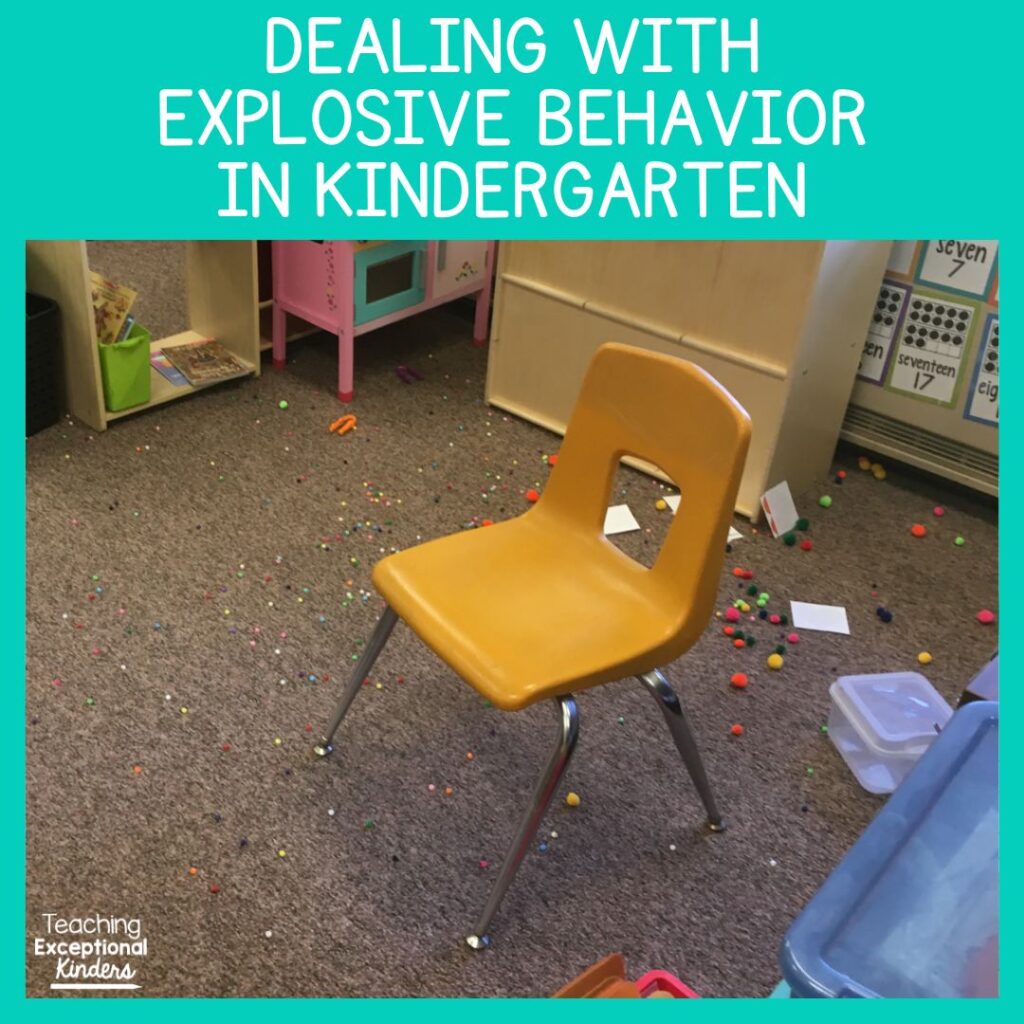
What Causes Explosive Behavior in Kindergarten?
Kindergarten is such a unique grade level to teach. Many of the students in your classroom are entering a school building for the very first time. They’ve never had to process their emotions in front of a group of children. They might be experiencing a lot of frustration about the new expectations they are asked to meet. Even for students who went to preschool, five- and six-year-olds are still developing their self-regulation and social skills.
You will see a wide range of behavior from your kindergarteners as they learn how to process disappointment, frustration, embarrassment, and anger while they’re at school. For this post, we’re going to focus on the extreme end of the scale, where students exhibit explosive behavior like throwing objects, flipping furniture, screaming, and other physical outbursts.
Dealing with Explosive Behavior in Kindergarten
1) Treat it as Atypical Behavior
The other tips that I’m going to share in this post might make it seem like you’re creating a routine that centers around this explosive behavior. That’s why I wanted my first tip to be this: Always treat explosive behavior as an atypical situation with your class. This is your students’ first experience at school, so you don’t want them to think that peers throwing chairs and teachers clearing the room are just part of being at school. This is a sure way to make your students anxious about being in the classroom!
While you shouldn’t condemn the student as you discuss the incident with your class, you also shouldn’t ignore or minimize the behavior. Instead, be forthcoming about what happened and how you addressed the behavior to keep everyone safe. Be sure to reassure your class that you’re there to help all students learn and stay safe at school.
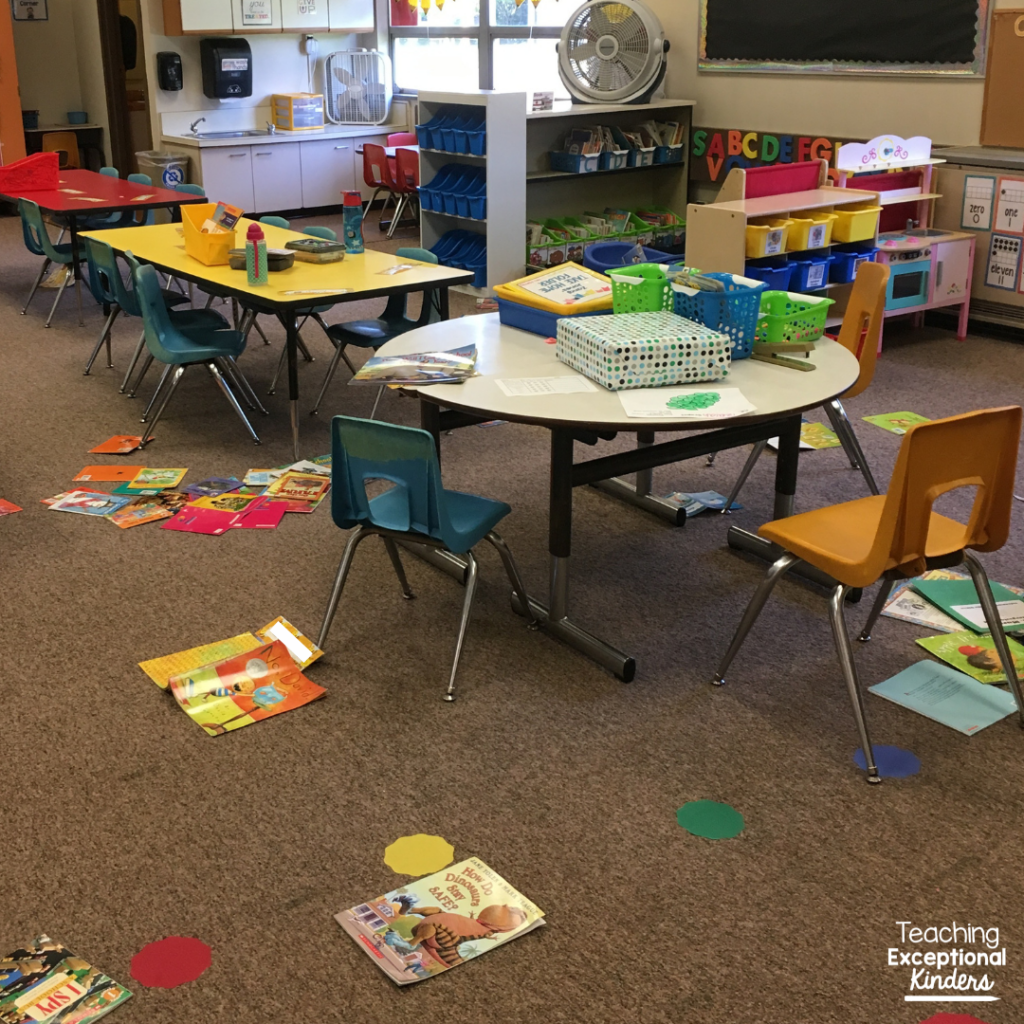
2) Clear the Classroom
When a student in your classroom is having an episode of explosive behavior, the first and most important step is to get your other students out of the room. You don’t want your students to become targets for flying scissors or flipped desks. At the beginning of the year, you can set up a plan with your neighboring teachers as well as your students. You can have a code word that you use with your class to let them know it’s time to sit in the hallway quietly.
Your neighboring teachers will know what to do when your students are in the hallway. Often, teams will split the students between multiple classrooms and read a story until it’s time to go back to class.
3) Keep Verbal Input at a Minimum
Once you know your students are safe and support is on the way, it can be tempting to try to de-escalate the student by talking to them. This is not the time to add verbal input to the mix. Your student is in the middle of an explosive escalation, so adding verbal input could likely make matters worse. This is when visual supports can come in handy!
4) Create a Crisis Plan
It’s almost impossible to predict which students will have extreme outbursts in the classroom before the school year starts. However, once that first room-clearing event happens, it’s time to put a crisis plan into place for that student. Your student does not need to have an IEP or 504 plan in order to have a crisis plan.
This should be an individualized safety plan for that student’s unique needs and circumstances. Be sure to include the parents and administration in this conversation; everyone must be on the same page about how you will keep all students safe should this behavior happen again.
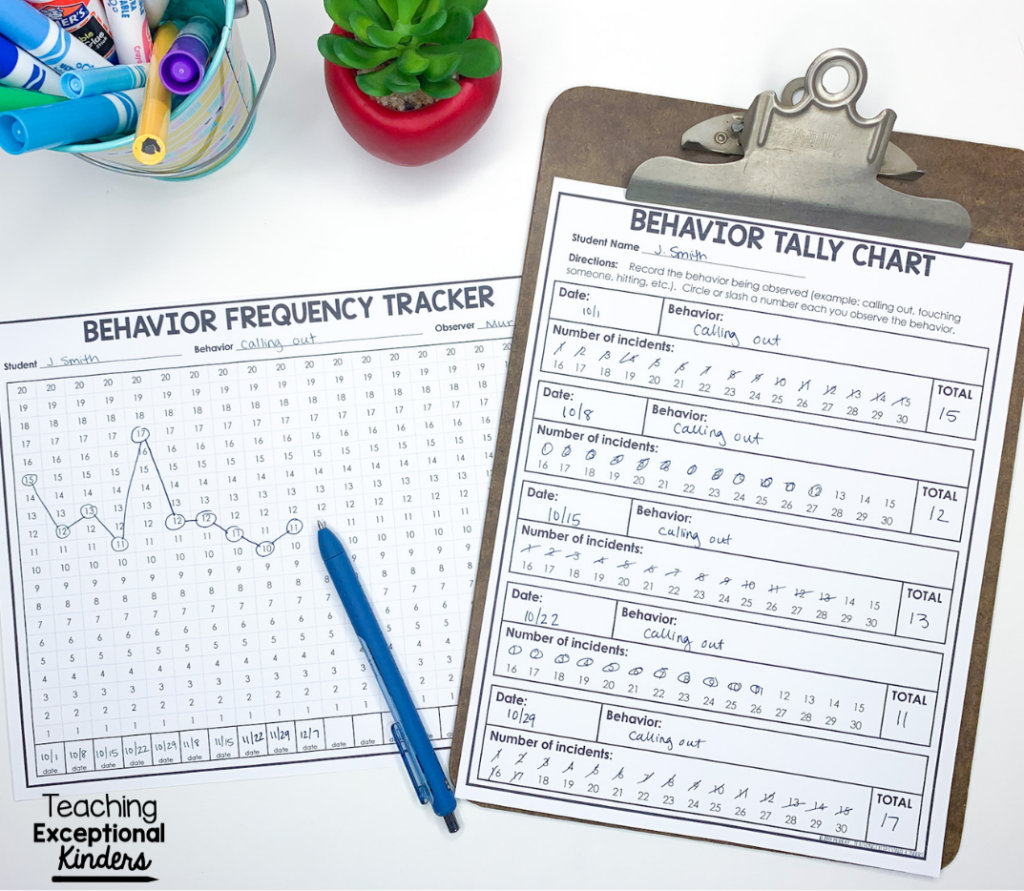
5) Document the Behavior
Finally, be sure to document the incidents that happen in your classroom. There are several reasons why you want to keep track of your students’ behavior.
- Identify Triggers: When you keep track of these incidents, including what happened right before the outburst, you can start to see patterns. An important step in addressing a behavior is understanding why it’s happening in the first place. Documenting behavior will make it easier to identify these potential triggers.
- Seek Additional Help: Once you can see patterns, your behavior documentation can help you seek additional help for the student. For example, if you notice that most of the outbursts are happening during a particular time of day, you can request additional help in your classroom during that time. It’s much easier to make those requests when you have data to back it up!
- Advocate for Yourself: It can be incredibly exhausting and intense to have a student in your classroom who exhibits explosive behavior. There are often tense meetings with parents and staff regarding the student’s outbursts. Having documentation in hand during these meetings can help you advocate for yourself and your students.
Behavior Documentation Printables for Kindergarten
I have created a resource that will make it easier for you to document the behavior in your classroom. These resources are designed to help you document and address challenging behavior while teaching and reinforcing positive behavior. With all of these printables in one easy-to-download bundle, you’ll be able to quickly implement these strategies in your classroom!
If you want to take a closer look at everything included in this bundle, you can find it in the Teaching Exceptional Kinders shop or on TPT.
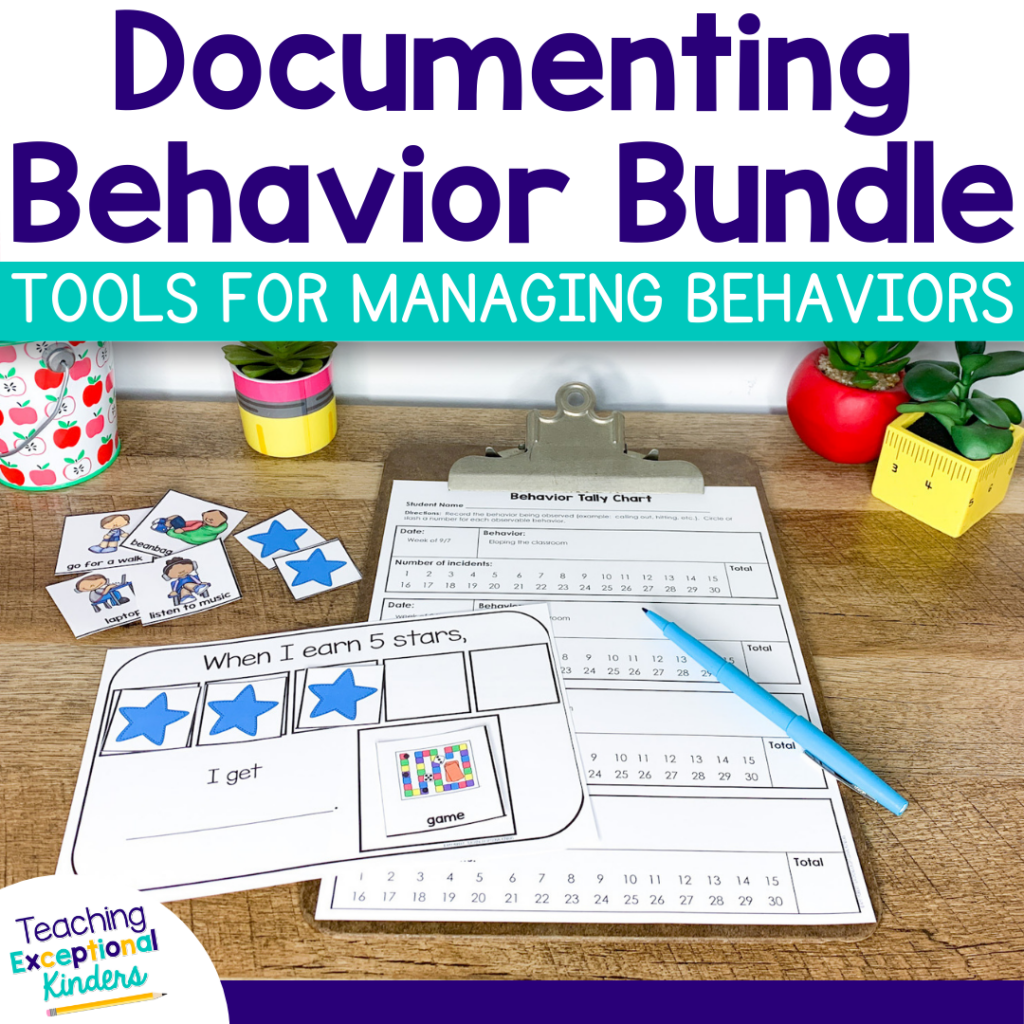
What to Do When a Student is Out of Control
For even more tips about dealing with explosive behavior, check out this video! Be sure to subscribe to my YouTube channel where I regularly share quick tips for kindergarten teachers.
Save These Tips for Dealing with Explosive Student Behavior
Be sure to save this post so you can come back to it later! Just add the pin below to your favorite teaching board on Pinterest. You’ll be able to quickly find these tips and resources whenever you need them.
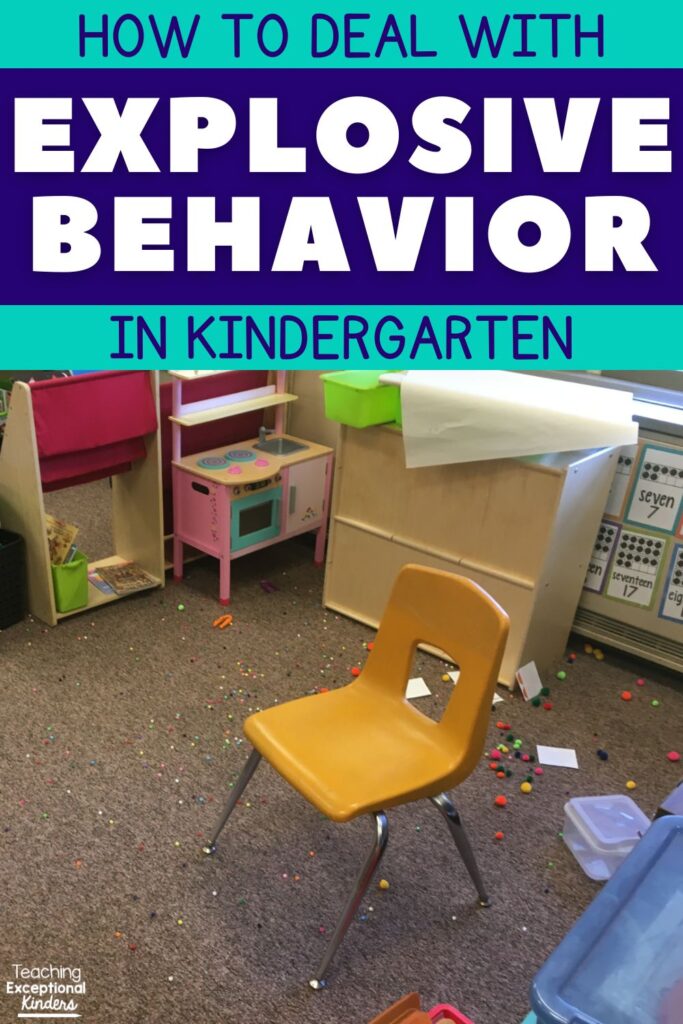
Amy
SITE DESIGN BY LAINE SUTHERLAND DESIGNS

